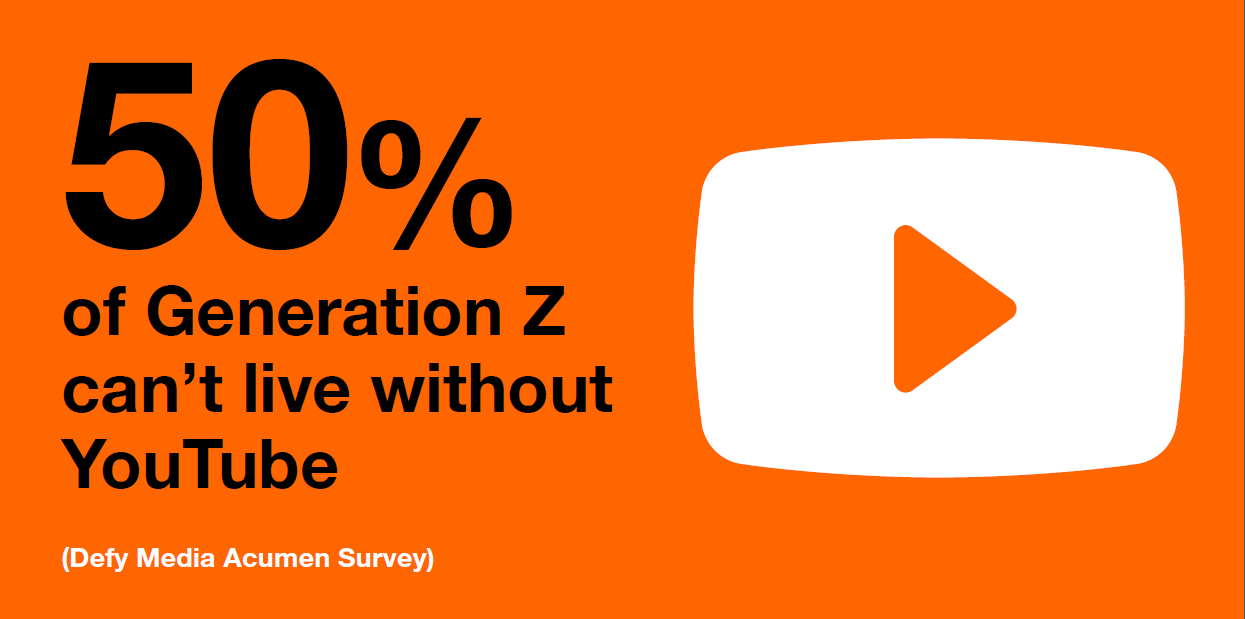Video streaming, training and conferencing are becoming increasingly essential in the workplace, with research by analyst IHS Markit1 revealing that 86 percent of companies plan to use video conferencing as of early 2018.
This will be due in large part to the emerging generation of workers who barely remember the world without YouTube, FaceTime and Skype. Their life is mobile-based, and that extends to how they use video. A survey of 1452 teenagers by Defy Media Acumen Survey found that YouTube was the most popular social platform, with 95% using it daily, and 50% saying they couldn’t live without it (compared to 15% for Snapchat. Just 6% couldn’t live without Twitter!).

And this pre-work generation want to use their preferred tools in the workplace. According to the Breaking Barriers 2020 report by Fuze, 75 percent of teens say they expect to be able to use the latest technology at work or will bring their own apps and devices.
Business video use increasing
The rise of video for personal and entertainment use has helped power the uptake of video in the workplace. Today businesses utilize video for many different external purposes, including for marketing, sales, training customers or partners, customer support and broadcasting events to customers and partners. According to video solutions provider Kaltura in its The State of Video in the Enterprise 2017 report4, the most popular external use case for video in the enterprise is for raising brand awareness, using it for website videos, social media, advertising and more. Sixty-two percent of respondents to a Kaltura survey cited this as the most common video use case in their company. Video conferencing with customers has also become popular, and in the financial sector banks that hold video meetings with customers have seen marked successes: according to the Vidyo banking survey5, 64 percent of banks say video has increased customer satisfaction, 62 percent report decreased branch workload and 60 percent say video has created faster customer service.

There are big internal benefits to be had too. In partnership with unified communications and collaboration (UC&C) tools, video training already has a good foothold, with 89 percent of large companies in the Kaltura survey saying they already use video for training employees. Furthermore, 69 percent said they use employee-generated video for sharing best practices, how-to tutorials and more. Enterprises also know that video can help them deliver an enhanced experience for telecommuters, save money on travel costs and even attract top talent.
The Kaltura survey also reported that an average company employee now watches more than 7 hours of work-related video per month, while according to Cisco, business IP traffic will grow at a CAGR of 21 percent between 2016 to 20216, with increased adoption of advanced video communications in the enterprise central to that.
Growing now, growing fast
Video in the enterprise has found its place and is set to grow fast. Markets & Markets predicts the enterprise video market will be worth over $40 billion by 2022 as companies integrate it better into collaboration suites. Moreover, training and communication are far more efficient with video, because it is simply more visual and set in time: you know that you will get the message in 3 minutes of video that would take markedly longer in person or via text documents.
Similarly, IBM has noted that viewership of enterprise streaming on mobile devices rather than desktop computers was almost five times higher in 2016 than in 2015, up from 6 percent to 29 percent. Connecting employees, customers and partners by video will continue to grow and the future for video looks bright.

I’ve been writing about technology for around 15 years and today focus mainly on all things telecoms - next generation networks, mobile, cloud computing and plenty more. For Futurity Media I am based in the Asia-Pacific region and keep a close eye on all things tech happening in that exciting part of the world.